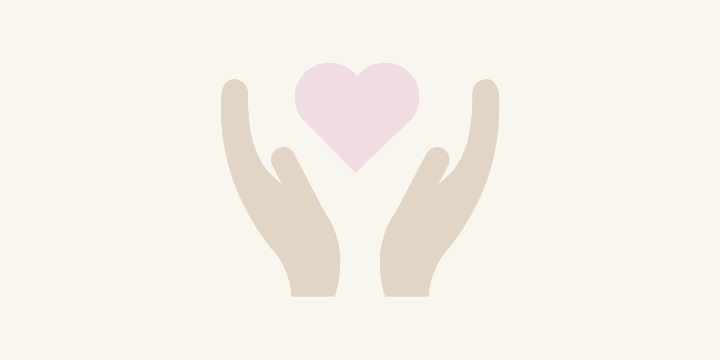There are no products in your basket.
UncategorizedSeven Tips for Establishing and Maintaining an Effective Mindfulness Practice
![Mindfulness-1024x532 Mindfulness-1024x532]()

Whether you are new to mindfulness or would like to make it part of your daily routine, following these steps will help you experience more gratitude and presence, whilst releasing judgment and control.
In today’s modern, fast-paced world we can forget how it feels to simply be a human being. What does it mean to fully show up in our lives from a place of integrity, awareness and positivity?
I have personally found the practice of mindfulness essential in addressing this question. My practice has given me the confidence that I already have everything I need to live a full and happy life. If you are interested in starting a mindfulness practice, here are some helpful tips to get you going.
Set a Clear Intention
The most important thing we can do when learning anything new is to be clear about who we think we are and what we think we’re doing. It is therefore helpful to spend some time reflecting on why we want a mindfulness practice and what we imagine might be possible as a result.
Here are some helpful reflection questions to support the development of a clear intention:
- What has brought me to practice? What am I looking for and what do I hope might change?
- What gifts am I bringing with me? What qualities and skills do I already have that can support me in my practice?
- What attitudes are important to bring to practice that can support me?
- What can I do each day to bring more awareness and positivity in my life?
Once you’ve set your intention, you may find it helpful to write it down and put it somewhere you will see it each day, like on your mirror in the bathroom, computer screen, or refrigerator. It is also helpful to check back in on our intentions from time to time to see if anything needs to be changed or updated.
Start Where You Are
Mindfulness supports us to get to know and accept ourselves just as we are. This isn’t some passive resignation, but rather a deep surrendering to our lives as they are unfolding right now. From this place of awareness and acceptance we can then begin to make clearer choices about how we want to live, rather than making choices out of potentially unhelpful habits.
Often we resist our moment-by-moment experience, especially if it is painful or unfamiliar, such as anger, sadness or stress. Instead, we wish we could be more loving, more present, or more relaxed and we wish we could be like that all the time. And then we judge ourselves when we aren’t able to meet this unreachable goal. The reality is that life, and we, are much messier and more mysterious than that.
Mindfulness asks us to be aware of all these expectations, not so that we can get rid of them, but in order to understand ourselves more fully. There is no other place to start our practice then from where we are today. Trusting in our own personal starting place is key to beginning our practice with integrity.
Learn to Meditate
A key part of mindfulness practice is simply to learn to notice what is actually happening right now and simply be with it as it is. Body-based meditation practices can help us to do this by supporting a shift in our awareness away from ruminating thoughts and judgments, and towards our direct experience in its simplest form.
We do this by firstly just noticing the fact that we have a body and that it’s connected to the earth. The force of gravity works on us, just as it works on everything else on the planet. It holds us in place and literally keeps up grounded. We can begin to learn to resource ourselves with grounded-ness simply by feeling the sensations of where the body meets the earth.
From here we can begin to turn towards our direct experience through the ancient practice of breath awareness. The breath is with us from the day we are born until the day we die. But how often are we actually fully present with a complete in and out breath?
In meditation, we can begin to familiarize ourselves with the breathing process, which research has shown can have a calming effect on both the body and mind. This calming effect allows us to get beneath the day to day chatter of the mind so we can begin to cull the depths and gain deeper insight into who we are and how we are wired. It’s like calming the churning waters of a stormy sea so you can see all that lies beneath.
Practice Daily
We are undeniably creatures of habit. The bad news is that, without awareness, we could live our whole lives simply reacting unconsciously to our lives, others and the world around us, often in ways that lead to suffering. The good news is, that with a bit of awareness, we can let go of old, unhelpful habits and set up new ones.
Mindfulness is not just about dropping old habits, but also about getting clear about the habits that we want to develop. Whether it’s meditation, a mindful walk at lunchtime, or a gratitude journal, daily practices support us to interrupt old cycles of thinking, feeling and acting and introduce new ways of doing things.
Whatever you decide to do, try and do it daily and with enthusiasm! Over time, you’ll see that more and more of you will get behind it and it will begin to become part of your day to day life.
Create a Dedicated Space for Practice
When establishing a new habit, it can be helpful to set up reminders for ourselves to help us connect with our intention and the commitment we’ve made to practice. No matter what your daily practice entails, it can be helpful to carve out a space in your home that is dedicated to its pursuit. This may be a separate room or even a corner of a room. Put things there that you find beautiful, inspiring and mysterious and make it as comfortable as possible. Keep everything you need in the space at all times, such as cushions for meditation, a clock, a pen and a journal.
Even if you aren’t able to practice everyday, having a dedicated space will remind you of your intention and even call to you to use it more often.
It’s also helpful to set an intention for how much time you will spend practicing each day. I would recommend 10 minutes to start, increasing to longer as time goes by.
Find Kindred-Spirits
Any new activity is always easier with others. We often underestimate the effect other people have on us. And when it comes to practice, friends can help us to remember our intentions. We can talk to them about what we are learning about ourselves and the world as we develop a mindfulness practice. They can support us to keep going when things are tough and to appreciate the efforts we’re making. And they can share their own energy, enthusiasm and insights with us.
If you don’t know anyone else practicing, perhaps take a mindfulness class or attend a retreat where you might meet people who you can stay in touch with afterwards. There are also many online communities now dedicated to supporting people in their mindfulness practice.
Don’t Worry About Getting it Right
We are so hard-wired for success in our culture that it can be very hard to let go of that habit when we come to mindfulness practice. In mindfulness, there is no right or wrong way to practice. There is simply finding your own way, the way that is going to work for you right now.
For example, when I first learned to meditate I was told that I would only make progress if I practiced for at least 40 minutes every day. But as much as I tried to get a daily practice going, I simply wasn’t disciplined enough to keep it up. I was young, working long hours, with an erratic schedule. I initially felt that I had failed and almost gave up on practice. But then a friend suggested I try going to a retreat, which I took to like a duck to water. In this way, I learned to commit to intensive, dedicated periods of practice within the context of a busy, urban life.
Nowadays, I do meditate on a regular basis, and much of that is due to the benefits I gained from meditating on retreat.
No matter what, don’t give up on yourself and trust that whatever has drawn you to practice will lead the way. All you have to do is listen deeply and follow your nose.

Singhashri
Singhashri is a mindfulness teacher and trainer at Breathworks, currently developing innovations for bringing mindfulness into the workplace.
Visit her Facebook page.



















